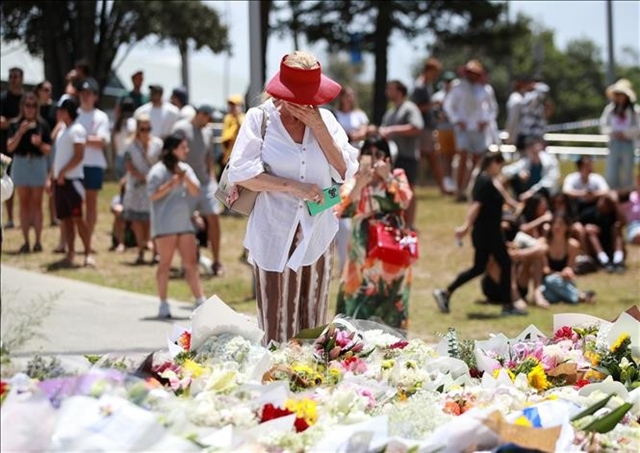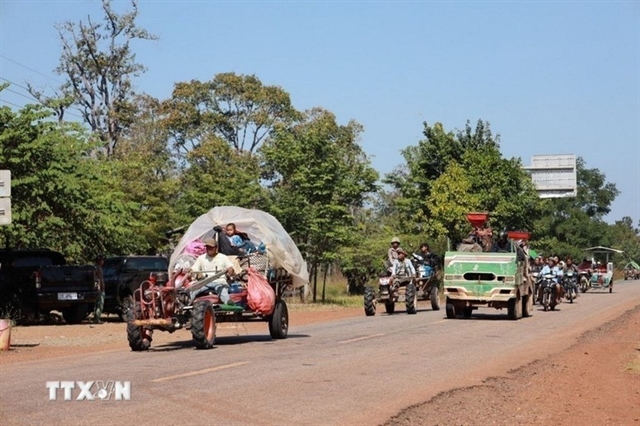 Society
Society
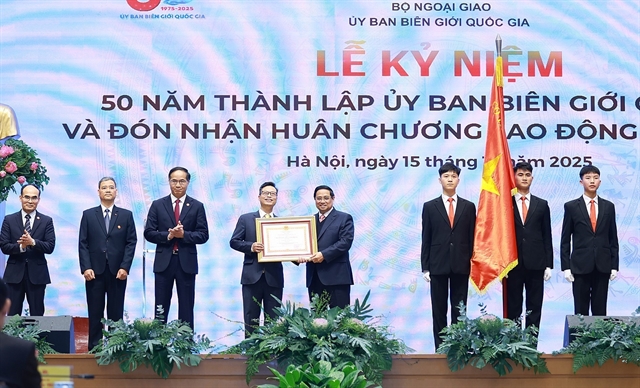
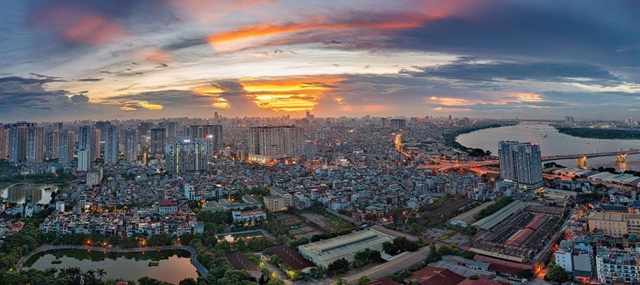 |
| The Hà Nội skyline, captured in September 2024. VNA/VNS Photo Tuấn Anh |
Anh Đức
In 2000, the hit song 'Hà Nội of the 2000s' blasted through the airwaves in Việt Nam.
Composed by renowned musician Trần Tiến, the song depicted Tiến's romanticised vision of the capital city, which just 28 years before was battling bomber jets in a raging war.
Twenty-four years later, most of Tiến's vision has come true, but there is still much more work to do.
A better standard of living
In the first line of the song, Tiến wrote, "In the Hà Nội of the 2000s/Children wouldn't be beggars on the street".
At the turn of the millennium, poverty was still a prominent issue in Việt Nam -- and not just in Hà Nội. Back then, many impoverished families came to the capital to make a living, with some even begging as a means of livelihood.
In 2000, according to government data and the national poverty threshold, 17.2 per cent of Vietnamese households were in poverty. For Hà Nội, this number was 3 per cent in 2006.
More than twenty years later, in a June 2024 report from the Hà Nội Office for New-style Rural Area Coordination, only 0.03 per cent of households in Hà Nội are in poverty, a 100-fold reduction compared to 2006.
Nowadays, it is rare to see a beggar on the streets of the capital. The city has taken a stance on homelessness by providing shelter and care for hundreds of homeless people through the Hà Nội Centre for Social Work and Child Protection Fund.
Although Hanoians' incomes have quintupled from VNĐ2 million (US$80.51) to almost VNĐ11 million (US$440), the rise in income also brought about a new problem: wealth inequality.
Young citizens now face significant pressure living in Hà Nội due to the exponential rise in costs -- especially the cost of accommodation -- despite the gradual income increase. A number of young people have voiced their frustration about working two or three jobs simultaneously, just to live in the capital.
Hà Nội must examine this problem, and perhaps solve it by providing future generations with affordable housing options, in order to keep a talented generation contributing to the capital's development.
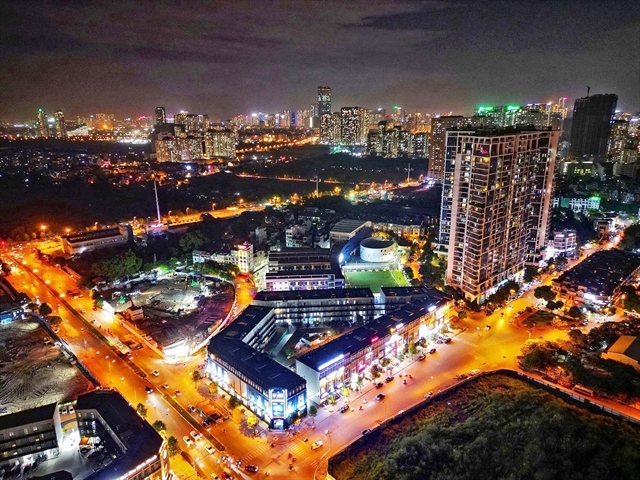 |
| Mỗ Lao ward in Hà Đông, Hà Nội, which underwent a remarkable transformation from a rural to an urban area. VNA/VNS Photo Tuấn Anh |
Modernised infrastructure
Another of Tiến's predictions came true when he wrote: "Houses rising high in the blue skies/But the streets and roads are still small".
Before the expansion of Hà Nội's urban area in 2008, districts such as Hà Đông and Nam Từ Liêm looked more like rural areas, with paddy rice fields all around and water buffalo crossing the streets.
Sixteen years later, and from those paddy rice fields have risen dozens of high-rise towers and luxurious urban housing projects.
The rise in skyscrapers also brought problems involving urban planning. In some areas of the city, loopholes were abused to create 'mini' apartments, which in turn create issues with fire control and prevention, as well as damaging the urban aesthetic. Old and dilapidated apartments from the 70s are also a complication that Hà Nội must deal with to protect the safety of residents.
Traffic jams in Hà Nội today are still a prominent issue, due to the size of streets in the city centre. Sure, it fits for a romantic song, but not for a hustling city with ambitions of becoming a regional business hub. Research conducted in 2023 estimated that Hà Nội suffers from an annual loss of US$1.2 billion due to traffic jams, a figure that would startle many.
But things are more promising for the future: in his song, Tiến predicted the return of the electric train after its demise in 1991. The electric train returned 30 years later, but in a new and more modern form: The Hà Nội Metro. The ambitious project is still expanding, with construction on the city's first underground urban metro underway. This project will surely transform the city more than ever, and maybe in the future, fewer vehicles will be seen on Hà Nội's streets, potentially solving the traffic jams once and for all.
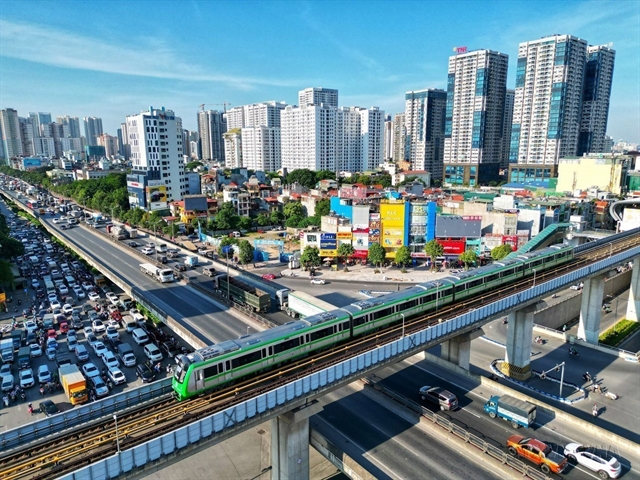 |
| The Cát Linh-Hà Đông metro line. VNA/VNS Photo Tuấn Anh |
A greener city
The average Hanoian in 2000 could name around three parks in the city: Thủ Lệ, Bách Thảo and Thống Nhất.
Twenty-four years later, that number is now 63, with the city determined to complete nine more and renovate 16 by 2024.
However, the city's green spaces need still more improvements to reach the United Nations' criteria of 10sq.m of trees per person. Hà Nội took action by planting more than 1.6 million trees from 2016 to 2020, and is committed to plant even more in the years to come.
The capital's shift to green energy is also notable, with three waste-to-power plants built and in operation since 2022. Green transportation options such as electric buses, taxis and bikes are also encouraged by the city and are currently popular among citizens.
As a resident of Hà Nội for almost 30 years, I have witnessed these remarkable changes, and it seems that we have solved almost every problem that we were fighting in 2000.
However, one major idea about problem solving is that it never ends: when you solve a problem, it creates another problem that needs to be solved, and the cycle and struggle goes on. But in that struggle, ideas are created that would better everyone's lives.
Hà Nội is not perfect, but Hà Nội in 2024 is way better than Hà Nội in the 2000s. And with a promising plan and a generation eager to contribute and change society for the better, Hà Nội in 2034 might progress even further.- VNS

